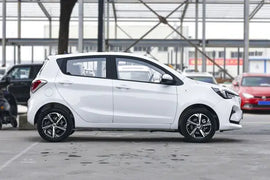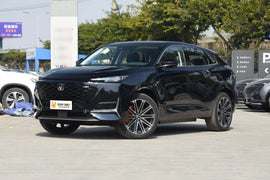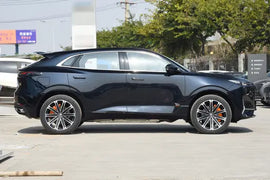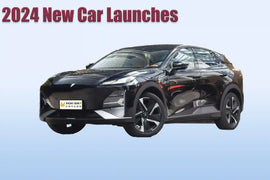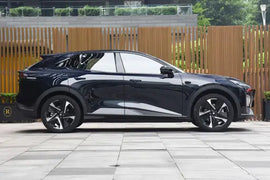
With a global push for sustainable transportation, the term "New Energy Vehicles" (NEVs) has become increasingly popular. NEVs represent a category of vehicles that utilize alternative energy sources to reduce carbon emissions and dependence on fossil fuels. However, the types of NEVs available vary significantly, and understanding their differences is crucial for consumers, policymakers, and anyone interested in the future of automotive technology. Below, we’ll take a closer look at different types of NEVs and the benefits of these vehicles.
1. Battery Electric Vehicles (BEVs)
Battery Electric Vehicles (BEVs) are fully electric vehicles powered exclusively by a rechargeable battery, with no internal combustion engine (ICE) at all. BEVs rely on electric motors and are charged by plugging into the electric grid.
Examples: Tesla Model 3, Xiaomi SU7, Deepal S07,ZEEKR 001,BYD Seagull
Key Features:
Zero Emissions: Since they operate solely on electricity, BEVs emit no tailpipe emissions, making them the cleanest option available.
High Efficiency: BEVs are typically more energy-efficient than traditional vehicles since electric motors can convert a greater percentage of energy from the battery into movement.
Charging Infrastructure: While BEVs require charging stations, home charging options are often available, and public infrastructure is rapidly expanding.
2. Plug-in Hybrid Electric Vehicles (PHEVs)
Plug-in Hybrid Electric Vehicles (PHEVs) combine an internal combustion engine with an electric motor and a battery that can be recharged by plugging into an external power source. PHEVs can operate in fully electric mode, in hybrid mode, or solely on gasoline if the battery is depleted.
Examples: Toyota Prius Prime, NEVO A05, BMW 330e,BYD Qin L DM
Key Features:
Dual Power Source: PHEVs offer flexibility by allowing the driver to switch between electric and gasoline power, extending the vehicle's overall range.
Lower Emissions: Compared to conventional vehicles, PHEVs produce fewer emissions, especially during short commutes in fully electric mode.
Charging Convenience: While they benefit from charging, PHEVs don't rely solely on electric charging infrastructure, making them a good option for those with limited access to chargers.
3. Hybrid Electric Vehicles (HEVs)
Hybrid Electric Vehicles (HEVs) also use a combination of an ICE and an electric motor, but they do not plug in to recharge. Instead, HEVs rely on regenerative braking and the engine to recharge the battery while driving.
Examples: Toyota Prius, Honda Insight, Ford Fusion Hybrid
Key Features:
Fuel Efficiency: HEVs are more fuel-efficient than traditional ICE vehicles due to their ability to switch between gasoline and electric power as needed.
Lower Emissions: By reducing fuel consumption, HEVs produce fewer emissions compared to conventional vehicles.
No Charging Needed: Since HEVs self-charge while driving, they don’t require external charging, making them convenient for those without easy access to charging stations.
4. Fuel Cell Electric Vehicles (FCEVs)
Fuel Cell Electric Vehicles (FCEVs) use hydrogen as a fuel source to generate electricity through a fuel cell. In this process, hydrogen reacts with oxygen to create electricity, which then powers the vehicle’s electric motor, with water vapor as the only emission.
Examples: Toyota Mirai, Hyundai Nexo, Honda Clarity Fuel Cell
Key Features:
Zero Emissions: FCEVs emit only water vapor, making them environmentally friendly.
Fast Refueling: Unlike BEVs, which require hours to charge, FCEVs can refuel at hydrogen stations in a matter of minutes, similar to conventional gasoline vehicles.
Limited Infrastructure: The primary drawback of FCEVs is the limited hydrogen refueling infrastructure, which is still in early stages in most regions.
5. Extended Range Electric Vehicles (EREVs)
Extended Range Electric Vehicles (EREVs) are a subcategory of plug-in hybrids. These vehicles primarily use electric power but have a gasoline generator onboard to extend the range once the battery is depleted. EREVs provide the benefits of BEVs in short distances but offer an ICE as a backup for longer trips.
Examples: Deepal S07,Chevrolet Volt,Li L6,AITO M9
Key Features:
Electric Primary Mode: EREVs are designed to operate in electric mode until the battery is exhausted, making them eco-friendly for most daily driving.
Backup Range: When the electric range is depleted, the gasoline engine powers a generator to extend the vehicle’s driving range, eliminating range anxiety.
Charging Optional: Like PHEVs, EREVs can be plugged in to recharge, but they don’t rely solely on electric charging, adding to their convenience.
6. Solar Electric Vehicles (SEVs)
Solar Electric Vehicles (SEVs) integrate solar panels, which supplement the battery charge. Although solar technology is still developing and is mostly used for auxiliary power, SEVs represent an innovative approach to energy efficiency.
Examples: Lightyear One, Aptera
Key Features:
Renewable Charging: SEVs can partially recharge using solar power, reducing the need for frequent plugging.
Range Extender: While they typically can’t rely solely on solar power, SEVs use sunlight to extend their range, especially beneficial in sunny climates.
Emerging Technology: Since SEVs are new to the market, their full potential and limitations are still being explored.
Each NEV type offers unique advantages and caters to different lifestyle needs:
BEVs: Ideal for short-to-medium distances with accessible charging options.
PHEVs: A flexible solution with dual power sources.
HEVs: Practical and self-sufficient, perfect for improved fuel efficiency without charging.
FCEVs: Emission-free with fast refueling, though limited by infrastructure.
EREVs: Battery-first approach with backup gasoline generator.
SEVs: Innovative solar-assisted vehicles still evolving.
As NEVs continue to evolve, selecting the right type involves understanding these vehicles' benefits and infrastructure requirements. Whether for environmental consciousness or practical convenience, the wide array of NEVs on the market today provides something for nearly everyone.I'm confident that after reading the above classifications, you'll know how to choose your NEV.



